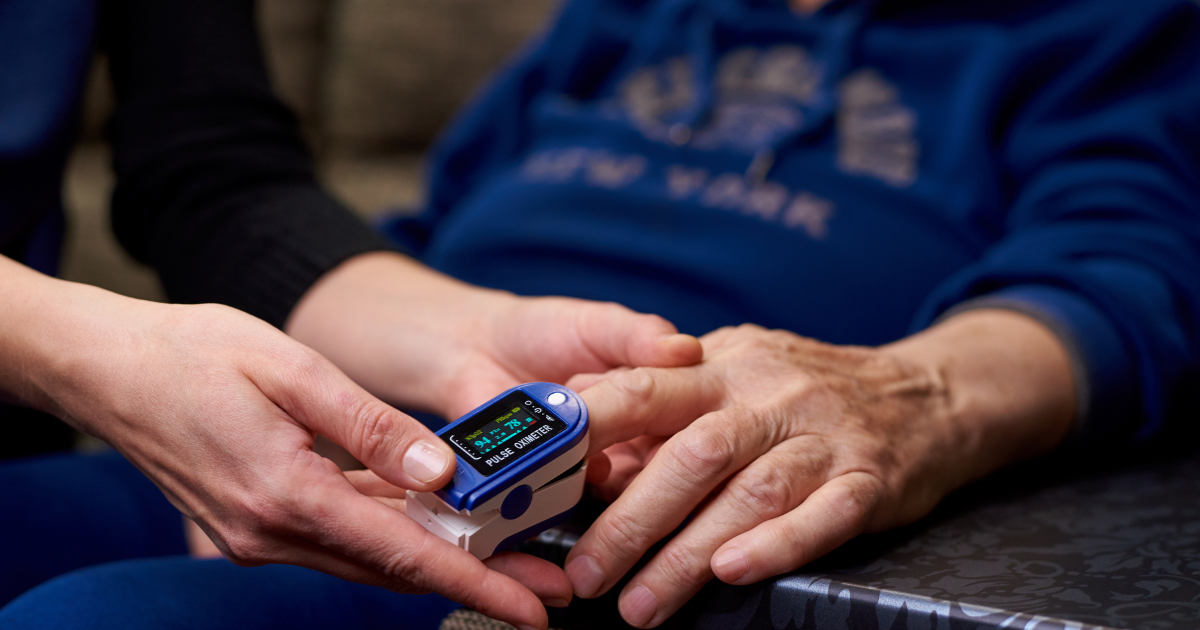Oxygen therapy is a critical treatment for patients experiencing acute respiratory distress or hypoxemia, a condition where blood oxygen levels are lower than normal. As frontline healthcare providers, nurses often find themselves in situations where they need to act swiftly to stabilize a patient’s condition. Whether or not Nurses Administer Oxygen Without an Order from a physician is subject to various factors that include the scope of practice, the urgency of the patient’s condition, and specific institutional policies.
Professional guidelines and local regulations outline the scope of nursing practice, which may vary considerably from place to place. In many settings, standing orders or protocols are in place that allow nurses to initiate oxygen therapy in emergency situations. These guidelines are designed to facilitate timely interventions that are crucial for patient care. However, outside of emergencies, the administration of oxygen typically requires a physician’s order. Understanding the legal framework, institutional policies, and the nurse’s own level of training and competency is essential for safe and effective patient care.
Can Nurses Administer Oxygen Without an Order-Key Takeaways

- Nurses must know their scope of practice and local regulations for oxygen administration.
- Standing orders may permit initiating oxygen therapy in emergencies without a physician’s order.
- Proper training and understanding of institutional policies are crucial for safe oxygen administration.
Legal Framework for Oxygen Administration

In our practice, safe oxygen administration is critical, and both federal and state guidelines regulate it to ensure patient safety.
Federal Regulations
Under federal regulations, the administration of oxygen typically falls under medical treatment. Specifically, the Food and Drug Administration (FDA) classifies medical gases like oxygen as prescription drugs, meaning they require a prescription or order from a licensed practitioner before a nurse can administer them to a patient. This is to ensure that oxygen is used appropriately and safely, taking into account the individual needs of the patient.
State Scope of Practice
Each state’s Nursing Practice Act outlines the scope of practice for nurses within that state. It’s up to us to familiarize ourselves with these specific provisions, as they can vary. For example:
- California: Nurses may initiate oxygen in emergency situations without an explicit order as part of standardized procedures.
- New York: Nurses must have a written or verbal order to administer oxygen, except in an emergency.
State boards of nursing provide detailed guidelines and are the authority on what nurses can and cannot do within their state. It’s important for us to consult our state’s regulations to understand when and under what circumstances we can administer oxygen without an order.
Nursing Responsibilities

When we discuss nurses’ responsibilities in administering oxygen, we focus on two critical aspects: assessing the patient’s status and monitoring oxygen levels. These roles are vital in ensuring patient safety and effective respiratory support.
Assessing the Patient’s Status
- Evaluate Respiratory Function: We need to check the patient’s breathing rate, depth, and effort.
- Identify Signs of Respiratory Distress: We look out for symptoms such as cyanosis, anxiety, confusion, and tachypnea.
Monitoring Oxygen Levels
- Regular Pulse Oximetry: We frequently use a pulse oximeter to measure the patient’s oxygen saturation (SpO2).
- Blood Gas Analysis: When required, we analyze arterial blood gases (ABGs) to get a detailed understanding of the patient’s oxygenation, ventilation, and acid-base balance.
Situations for Nurse-Initiated Oxygen Therapy

In certain situations, nurses can initiate oxygen therapy without a doctor’s direct order. Quick response and our clinical judgment are vital in these circumstances.
Emergency Scenarios
When a patient is experiencing acute respiratory distress or a drastic drop in oxygen saturation, time is of the essence. We act quickly by administering oxygen to stabilize their condition. Here are some emergencies we might encounter:
- Cardiac arrest: We don’t hesitate to deliver high-flow oxygen during CPR.
- Anaphylaxis: Oxygen supports breathing in severe allergic reactions.
In-Patient Care Protocols
Hospitals may have standing orders that enable us to provide oxygen under specific conditions. These protocols guide us to act when we observe signs of hypoxemia. For example:
- Post-surgical recovery: To promote optimal breathing, we administer oxygen per protocol after certain surgeries.
- Chronic lung diseases: Patients with COPD may require oxygen if they exhibit signs of respiratory distress.
Institutional Policies and Protocols

When we talk about nurses administering oxygen without an order, our focus is primarily on the institutional policies and protocols that dictate how this practice is managed.
Hospital Guidelines
Most hospitals have clear guidelines on when and how nurses can administer oxygen without a direct order. Typically, standing orders or protocols are in place, which allow us to administer oxygen in emergency situations to stabilize a patient while waiting for a physician’s order. These guidelines are specific and include:
- Oxygen saturation levels that warrant intervention
- Appropriate oxygen delivery methods (e.g., nasal cannula or mask)
- Documentation requirements
It’s crucial to stay updated with our hospital’s latest policies as they can change and affect our practice.
Clinical Setting Differences

The autonomy to administer oxygen without an order can vary significantly across different clinical settings:
- Emergency Rooms (ER): Nurses often have more latitude in acting quickly due to the urgency of the care required.
- Intensive Care Units (ICU): There are usually detailed protocols because of the complex nature of patient care.
- General Wards: Restrictions might be tighter, with a greater need for physician’s orders.
- Home Health/Remote Areas: Protocols may allow for more nurse discretion due to the potential delay in obtaining a physician’s order.
Professional Training and Competency

We know that administering oxygen is a critical procedure that requires specific training and competence. Our nurses are thoroughly educated, and their skills are regularly verified to ensure that they provide safe and effective care.
Education Requirements
In our nursing programs, we cover the essentials of respiratory care, including oxygen therapy. Core subjects include:
- Anatomy and Physiology: Understanding the respiratory system.
- Pharmacology: Knowing the medications, including oxygen.
- Nursing Skills: Hands-on training in administering oxygen.
This education provides us with a solid foundation to administer oxygen when necessary safely.
Certification and Skills Verification
After our formal education, we’re required to obtain certification. Here’s what that involves:
- Licensing Exam: The NCLEX-RN for registered nurses.
- Continuing Education: Staying updated with the latest practices.
To confirm our skills in oxygen administration, we undergo:
- Skills Competency Checklists
- Periodic Skill Assessments
These verifications ensure we remain competent in providing oxygen therapy to those who need it.
Conclusion

We’ve looked at the protocols around oxygen administration by nurses. Let’s summarize our key points:
- Nurse Autonomy: In emergencies, we can administer oxygen as a life-saving intervention.
- Standing Orders: Many facilities have protocols in place allowing us to give oxygen without a direct order each time.
- Clinical Judgment: We use our skills and judgment to assess oxygen needs while following facility guidelines.
Remember, our actions are governed by:
- State nursing boards
- Hospital Policies
- Standard operating procedures
Our commitment remains to provide safe and effective care to our patients, always working within the framework of our professional standards and legal guidelines.
References:
- allnurses.com. Giving O2 without an order??. https://allnurses.com/giving-o-without-order-t436036/. Accessed 31 Aug. 2023.
- The Royal Children’s Hospital Melbourne. Oxygen Delivery. https://www.rch.org.au/rchcpg/hospital_clinical_guideline_index/Oxygen_delivery/. Accessed 31 Aug. 2023.
- Nursing Skills (OpenRN). Nursing Process Related to Oxygen Therapy. https://med.libretexts.org/Bookshelves/Nursing/Nursing_Skills_(OpenRN)/11%3A_Oxygen_Therapy/11.04%3A_Nursing_Process_Related_to_Oxygen_Therapy. Accessed 31 Aug. 2023.
- NCBI Bookshelf. Oxygen Administration – StatPearls. https://www.ncbi.nlm.nih.gov/books/NBK551617/. Accessed 31 Aug. 2023.
- Nursing made Incredibly Easy – LWW. Fundamentals of oxygen therapy. https://journals.lww.com/nursingmadeincrediblyeasy/Fulltext/2011/03000/Fundamentals_of_oxygen_therapy.6.aspx. Accessed 31 Aug. 2023.
Frequently Asked Questions
What are the nursing responsibilities for oxygen therapy?
Nurses have several responsibilities when it comes to oxygen therapy. They must assess the patient’s oxygen saturation levels and respiratory status, select the appropriate oxygen delivery device and flow rate, and monitor the patient’s response to oxygen therapy. Nurses must also ensure that the oxygen delivery system is functioning properly and that the patient is receiving the correct amount of oxygen.
What are the indications for oxygen administration?
Oxygen administration is indicated for patients with hypoxemia, a deficiency of oxygen in the blood. Hypoxemia can be caused by various conditions, including respiratory distress, pneumonia, asthma, chronic obstructive pulmonary disease (COPD), and heart failure. Oxygen therapy can also be used during surgery and in other situations where the patient’s oxygen levels may be compromised.
